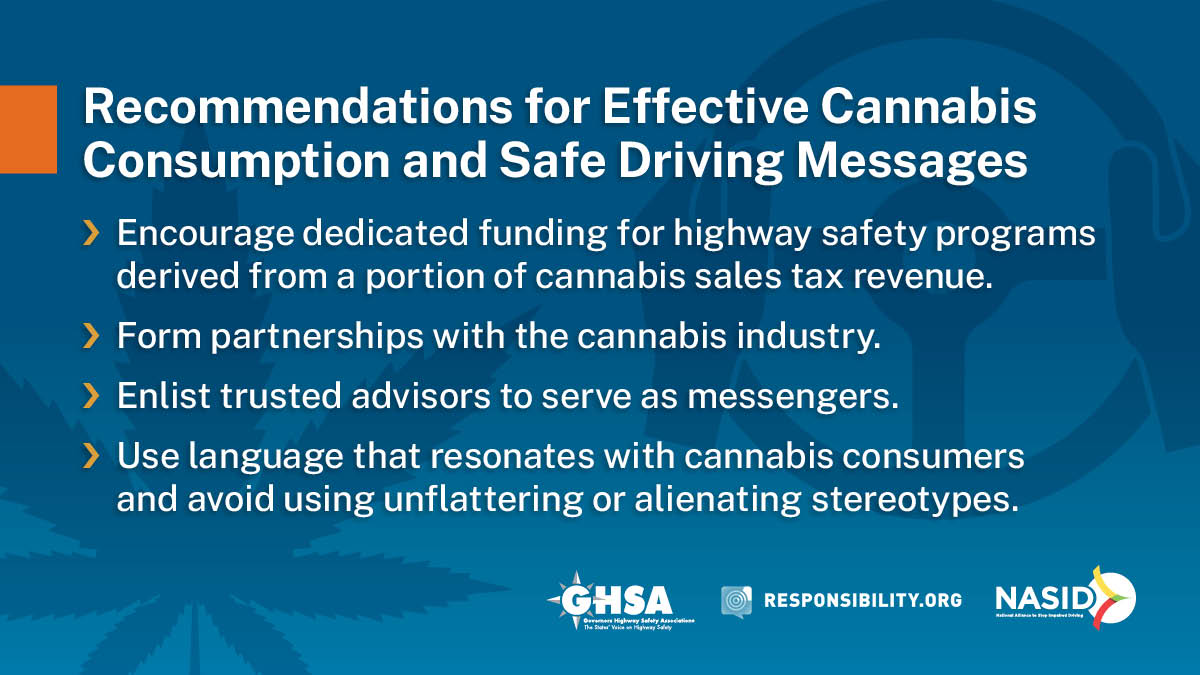Cannabis Consumers and Safe Driving: Responsible Use Messaging


This GHSA report provides guidance on how states can communicate with cannabis consumers about safe driving.


This GHSA report provides guidance on how states can communicate with cannabis consumers about safe driving.
GHSA’s new report with Responsibility.org and the National Alliance to Stop Impaired Driving (NASID), Cannabis Consumers and Safe Driving: Responsible Use Messaging, provides guidance on how State Highway Safety Offices (SHSOs) can share safe driving messages with cannabis consumers suggests which types of messages are most effective.
SHSOs face a rapidly changing cannabis landscape, including the legality, the prevalence and the social norms about its use. Even as more people become familiar with cannabis and as calls for national legalization grow, there remains a significant disconnect between people’s views on its use and safe driving, emphasizing the need for effective public outreach and education. An AAA Foundation for Traffic Safety survey found that 95% of people say driving while over the legal blood alcohol concentration (BAC) limit is very or extremely dangerous, but only 69% believe it is dangerous to drive within an hour of consuming cannabis. Some people even think that cannabis use improves their driving. But research confirms that cannabis directly affects the parts of the brain responsible for attention, decision-making, coordination, and reaction time, which are all critical for safe driving.
The report highlights lessons learned from outreach efforts in Colorado and Washington, the first states to legalize cannabis, as well as more recent efforts in Connecticut and Wyoming. It also discusses promising practices that all SHSOs should consider utilizing to create the most effective messages and offers the following recommendations:
The NASID website features an interactive, online database updated in real-time that lets users easily see cannabis and DUI laws across the U.S.
Please cite the Governors Highway Safety Association when using the graphic below. Right click on the graphic, then select "save image as..." to download it. If you're sharing on social media, consider tagging us at @ghsahq on X/Twitter, @GHSAhq on Facebook and Governors Highway Safety Association (GHSA) on LinkedIn.
